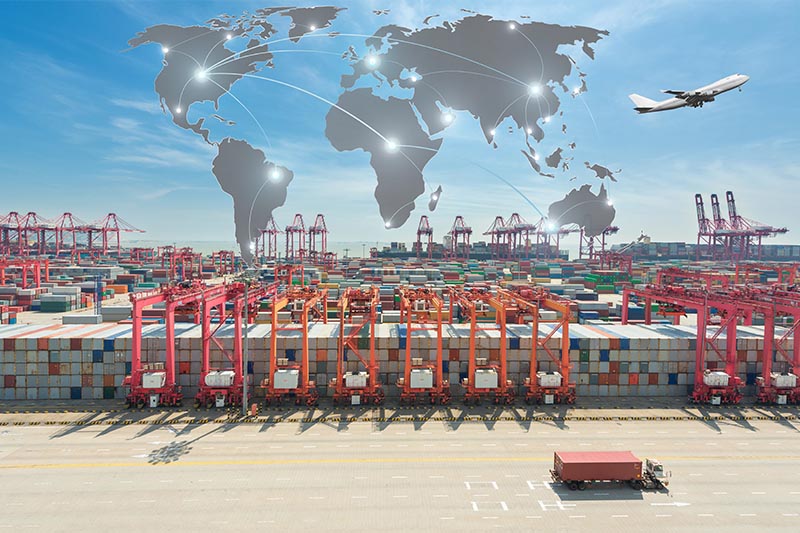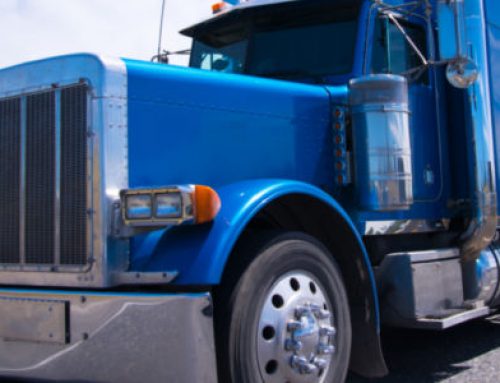2016 was not a dull year for logistics
So, while we have just a few days before 2016 is officially in the books, now is a good time to take a look at some of the notable logistics happenings of 2016. This compilation below is made up of some of the key stories, trends, themes and otherwise.
By Jeff Berman, Group News Editor- Logisticsmgmt.com · December 22, 2016:
In the blink of an eye, here we are at the end of another year in the logistics world. It goes without saying that 2016 will end up being a year to remember to be sure.
Why? Well, for one thing, it was an election year, and for another, it was a year in which some years-long themes in the sectors and modes we cover remained intact, whereas others had more of an eye on the future in terms of what may be coming next.
So, while we have just a few days before 2016 is officially in the books, now is a good time to take a look at some of the notable logistics happenings of 2016. This compilation below is made up of some of the key stories, trends, themes and otherwise. A lot of things happened in 2016, so if you don’t see something that should have been included please accept apologies in advance.
So, without further adieu, here is a look at 2016 in review:
Railroad capital expenditures head down. While railroads still far outspend the average U.S. manufacturer at 18 percent of revenue compared to an average of 3 percent, 2016 capex for the rails was down compared to previous years, when compared to 2014 and 2015. The declines in capex reflected a railroad and intermodal market that from a volume that was down, and in some cases, extended to revenue and net income, too. With things improving for the rails, volume-wise, in Q4, it would not be surprising to see 2017 capex return to their more lofty levels.
Large-scale 3PL deals became official. As reported in LM, 3PL integration was a key theme for the sector, as evidenced by DSV acquiring UTi Worldwide, Con-way being scooped up by XPO, and Echo Global Logistics acquiring Command Transportation. While some of these deals were first announced in 2015, they were inked in 2016. Some of the things in common for each of these deals include the massive scale, scope, pairing and meshing of service offerings, access into different vertical markets and geographies, not to mention the massive price tags, too. In each case for these respective deals, things have moved quickly and efficiently to get through the acquisition growing pains and get out in front of customers with a bigger playbook, footprint, and service menu.
Ocean consolidation and alliances take on larger role in a struggling sector. Faced with crippling market conditions like lack of demand (and volume), overcapacity, and rates not sticking, 2016 saw the ocean container shipping sector go through various consolidations and alliance agreements-like Maersk signaling its intent to acquire Hamburg Sud, CMA CGM acquiring Neptune Orient Lines, and the Ocean Alliance comprised of COSCO Shipping, CMA CGM, Evergreen Marine, and Orient Overseas Container Line Limited (OOCL)–in order to better leverage assets and keep global commerce moving at the same time. It has not been an easy journey for the sector and that will not likely materially change in 2017.
The Amazon effect. Is Amazon en route to becoming a logistics superpower? It may be depending on whom you ask, as they likely won’t tell you. But either way it’s hard to ignore the continued inroads the e-commerce giant made on the logistics front in 2016, including: its plans to roll out an Uber for trucking app, that matches truck drivers with shippers looking to move freight; air cargo service agreements with ABX Air and ATSG; and possibly planning to roll out its own shipping network, among other initiatives. There is never a dull moment with Amazon, and 2017 is likely to be more of the same.
President Donald Trump. While he has not taken office yet, President-elect Donald Trump is taking matters into his own hands logistically, with plans to roll out a massive infrastructure plan (how will it be funded? Stay tuned); a desire to significantly alter existing trade deals, and pushing to keep domestic manufacturing jobs in the U.S. How things like this and others impact our sectors remains to be seen, but we will see the onion peeled starting next month for certain.
2016 ocean cargo volumes pegged for growth. Import cargo volumes at U.S.-based retail container ports are expected to see gains on an annual basis in December and for all of 2016, according to the most recent Port Tracker report by the National Retail Federation (NRF) and Hackett Associates. For all of 2016, the report is calling for volume to be up 2 percent annually at 18.6 million TEU compared to 2015’s 18.2 million TEU, which was up 5.4 percent over 2014. The first half of 2016 saw a 1.6 percent annual increase at 9 million TEU. The 1.6 percent estimate is lower than last month’s 2.2 percent prediction.
Major volumes are coming….in the future. A report focused on freight growth issued in March by the United States Department of Transportation’s Bureau of Transportation (BTS) and Federal Highway Administration (FHWA) stated that freight tons moving on the United States’ transportation network are pegged to grow 40 percent over the next three decades to 25 billion tons, with the value of freight expected to rise 92 percent to $37 trillion. What’s more, it added that tonnage expected to increase to 69 million tons per day by 2045, with the growth in value expected to outpace growth in tonnage, which is expected to hit $101 billion.
Truckers endorse move to revert to pre-2013 Hours of Service regulations. Trucking interests are applauding a congressional fix to the controversial “34-hour restart” provision that was making long-term route planning difficult for shippers and carriers. At issue was a trucking industry desire to revert to the 34-hour restart regulations that were in place July 1, 2013. That would mean truck drivers do not need to include two mandatory 1 a.m. to 5 a.m. rest periods which some drivers and fleet executives said was unnecessary and complicated.
“Reverting back to the pre-July 2013 restart shifts the emphasis back to safety by removing flawed data from the rulemaking process,” said American Trucking Associations President and CEO Chris Spear.
“The entire industry will now be able to comply with this rule thanks to a common sense approach championed by a bipartisan group of legislators.”
FedEx-TNT deal is made official. The $4.8 billion acquisition of Netherlands-based TNT Express-NV, a provider of mail and courier services and the fourth largest global parcel operator, by transportation and logistics services provide FedEx was made official in May. FedEx said that the networks of TNT Express and FedEx are largely complementary, given that FedEx’s strength is providing U.S. domestic and extra-EEA international services, while TNT Express’ focus is on providing intra-European services while also noting that the Combination would allow the parties to sell a more competitive e-commerce offering in the market, which should benefit consumers and SMEs in Europe and beyond.
Proposed CP-NS merger gets derailed. The proposed nearly $30 billion merger of Class I railroad heavyweights Canadian Pacific (CP) and Norfolk Southern (NS) came to an end in May despite myriad repeated overtures by the former. CP initially expressed its interest in acquiring NS in November 2015, explaining it believed the combined railroad would offer unparalleled customer service and competitive rates that would support the success of shippers and industries it serves and also satisfy U.S. Surface Transportation Board and Canadian regulators. And NS said that its board came to the conclusion that CP’s indication of interest was grossly inadequate, creates substantial regulatory risks and uncertainties that are highly unlikely to be overcome, and not in the best interest of the company and its shareholders.
DOT, EPA issue final rules for heavy-duty trucks greenhouse gas and fuel efficiency standards. The United States Environmental Protection Agency and the Department of Transportation’s National Highway Traffic Safety Administration announced their jointly finalized standards for medium- and heavy-duty vehicles that will augment fuel efficiency and reduce carbon pollution. This final rulemaking marks the culmination of standards rolled out in June 2015 by the DOT and EPA. And it also leverages the current fuel efficiency and GHG standards in place for model years 2014-2018, which DOT and EPA said will result in 270 million metric tons in CO2 emissions reductions and reduce vehicle owners fuel costs by more than $50 billion.
The first round of these truck standards covered model year 2014 and 2015 trucks. DOT and EPA said that the final phase two standards were called for by President Obama’s Climate Action Plan in response to the President’s 2014 directive to develop new standards into the next decade. This rulemaking has a sharp freight transportation and supply chain focus, considering that heavy-duty trucks represent the second largest segment and collectively account for the largest increase in U.S. transportation in terms of emissions and energy use.
Expanded Panama Canal opens for business. The long-awaited expansion of the Panama Canal, which was roughly ten years in the making, became a reality in late June. The Canal’s expansion is the largest enhancement project in its history. construction on the $5.25 billion project kicking off in 2007. This project was comprised of the construction of a new set of locks on the Atlantic and Pacific sides of the waterway, coupled with the excavation of more than 150 million cubic meters of material subsequently creating a second lane of traffic and doubling the cargo capacity of the waterway. The expanded Canal’s locks are 70 feet wider and 18 feet deeper than those of the original Canal.
This list provides a decent overview of some of the key trends and themes in 2016 to be sure, but, as I mentioned before, please accept my apologies if I omitted something you thought was missing.



Leave A Comment